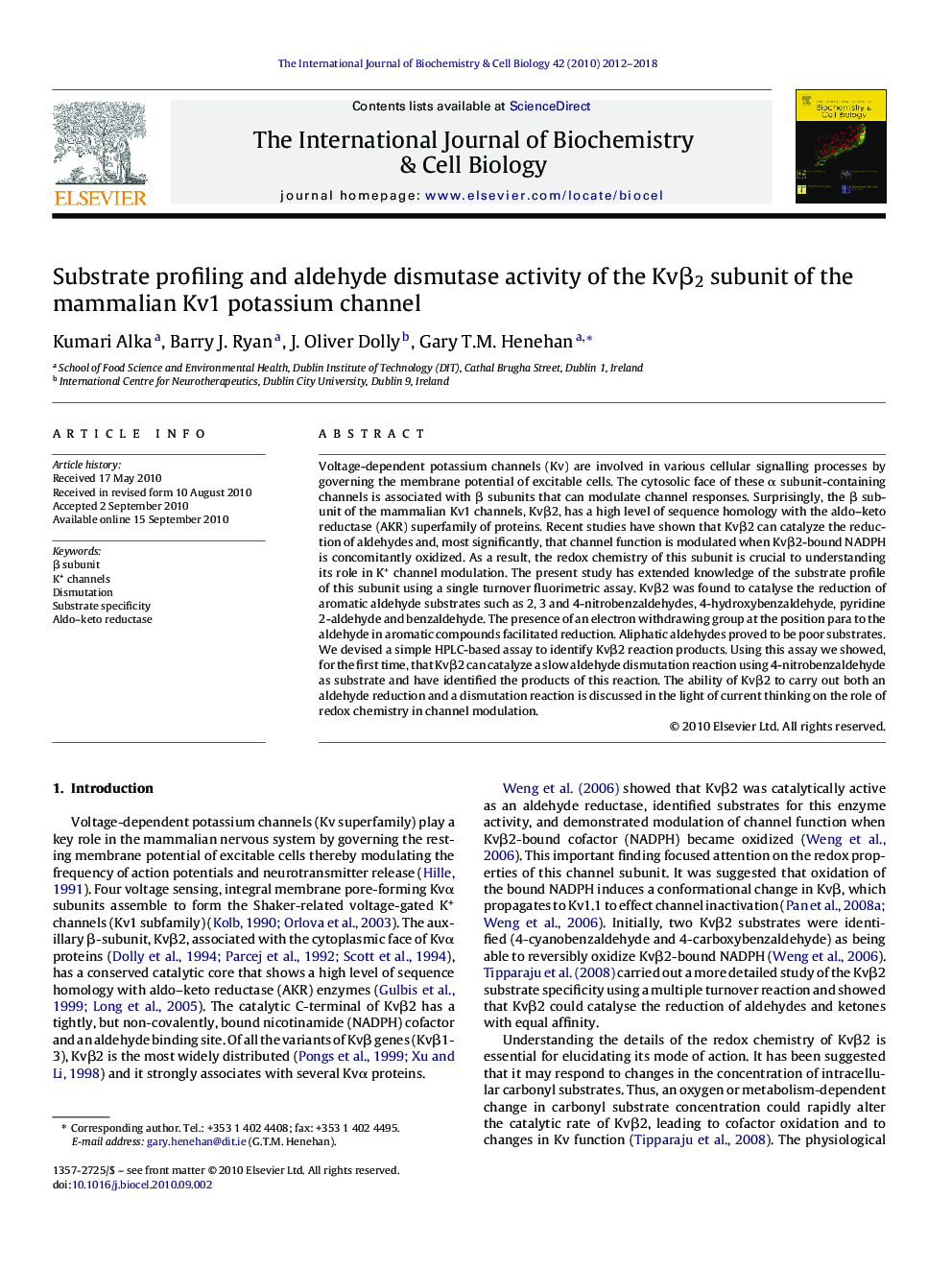| Article ID | Journal | Published Year | Pages | File Type |
|---|---|---|---|---|
| 1984241 | The International Journal of Biochemistry & Cell Biology | 2012 | 7 Pages |
Voltage-dependent potassium channels (Kv) are involved in various cellular signalling processes by governing the membrane potential of excitable cells. The cytosolic face of these α subunit-containing channels is associated with β subunits that can modulate channel responses. Surprisingly, the β subunit of the mammalian Kv1 channels, Kvβ2, has a high level of sequence homology with the aldo–keto reductase (AKR) superfamily of proteins. Recent studies have shown that Kvβ2 can catalyze the reduction of aldehydes and, most significantly, that channel function is modulated when Kvβ2-bound NADPH is concomitantly oxidized. As a result, the redox chemistry of this subunit is crucial to understanding its role in K+ channel modulation. The present study has extended knowledge of the substrate profile of this subunit using a single turnover fluorimetric assay. Kvβ2 was found to catalyse the reduction of aromatic aldehyde substrates such as 2, 3 and 4-nitrobenzaldehydes, 4-hydroxybenzaldehyde, pyridine 2-aldehyde and benzaldehyde. The presence of an electron withdrawing group at the position para to the aldehyde in aromatic compounds facilitated reduction. Aliphatic aldehydes proved to be poor substrates. We devised a simple HPLC-based assay to identify Kvβ2 reaction products. Using this assay we showed, for the first time, that Kvβ2 can catalyze a slow aldehyde dismutation reaction using 4-nitrobenzaldehyde as substrate and have identified the products of this reaction. The ability of Kvβ2 to carry out both an aldehyde reduction and a dismutation reaction is discussed in the light of current thinking on the role of redox chemistry in channel modulation.
